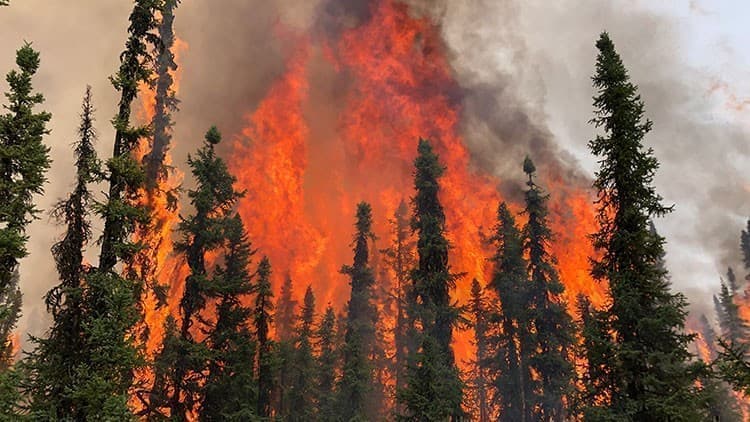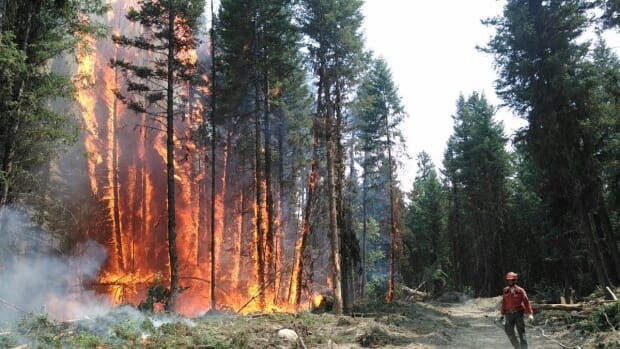U.S. Gas Prices May Rise is a headline stirring concern and compassion across North America. In June 2025, fierce wildfires swept through Alberta with heartbreaking force, forcing the closure of several oil production sites and pausing about 350,000 barrels per day (bpd) of crude output—roughly 7% of Canada’s total oil production. This significant loss sends gentle ripples of worry through Canada’s economy and touches U.S. fuel markets, reminding us to support affected communities and prepare with care for potential changes at the pump.

While oil stories don’t always make the front page, this one’s different. It hits the fuel pump, the environment, and even international trade. Canada is the United States’ top foreign oil supplier, and with wildfires now affecting energy infrastructure directly, Americans from California to Kansas are watching prices rise at the pump. Let’s dive into what’s happening, why it matters, and what comes next.
Canada’s Wildfires Shut Down 7% of Oil Production
| Key Point | Details |
|---|---|
| Production Impact | ~350,000 bpd of Canadian oil halted due to wildfire evacuations |
| Percent of National Output | 7% of Canada’s total oil production |
| Major Affected Companies | Cenovus Energy, Canadian Natural Resources, MEG Energy |
| Area Burned | 400,000+ hectares in Alberta, 1.4 million hectares across Canada |
| U.S. Dependency on Canada | U.S. imports 25% of its crude oil from Canada |
| Crude Price Reaction | WTI rose 2% to $63/bbl, Brent crude hit $65/bbl |
| U.S. Gas Price Forecast | Potential 5-15% increase in gasoline prices in high-dependency U.S. regions |
| Evacuation Count | Over 20,000 residents and hundreds of workers relocated |
| Official Sources | Reuters, Bloomberg, Natural Resources Canada |
What started as a heartbreaking environmental crisis in Canada now reaches across borders, touching lives and livelihoods with care. With 7% of Canada’s oil production paused, U.S. gasoline prices are gently climbing, sending soft ripples through shipping, travel, and even the air we breathe. This moment calls for compassion and understanding, as we support affected communities and navigate these changes together with hope for a brighter, healthier future.
For consumers, this is a moment to stay alert, plan ahead, and support infrastructure that can adapt to an increasingly unpredictable climate. For policymakers and energy companies, it’s another reminder that in today’s world, wildfires aren’t just natural disasters—they’re economic ones too.

What Happened in Alberta?
Alberta’s wildfire season began aggressively in 2025, fueled by record droughts, high winds, and scorching temperatures. The blazes surged through the oil-rich boreal forest, forcing multiple companies to shut down operations for safety.
Major Disruptions
- Cenovus Energy suspended operations at Christina Lake, affecting up to 238,000 bpd.
- Canadian Natural Resources paused output at its Jackfish site, halting 36,500 bpd.
- MEG Energy temporarily evacuated staff and lost production due to electrical disruptions impacting ~70,000 bpd.
Together, these and smaller producers took offline over 350,000 barrels daily. Infrastructure like pipelines and power lines have also suffered damage, delaying restart timelines.
Environmental Scope
By June, wildfires had scorched over 1.4 million hectares across Canada, with Alberta accounting for nearly one-third of the total burn area. This is on pace to match or exceed the devastating wildfire year of 2023.
Why U.S. Gas Prices Are Rising
Canada is a top-tier player in the global oil scene. But what most Americans don’t realize is that a full 25% of U.S. oil imports come from Canada—mostly from Alberta.
Impact by Region
If you live in:
- The Midwest (Chicago, Detroit, Minneapolis)
- The Pacific Northwest (Seattle, Portland)
- The Gulf Coast (Texas, Louisiana)
…then you’re particularly vulnerable to price jumps. U.S. refineries in these regions are designed to process bitumen-based heavy crude, which Canada specializes in.
Why Replacing Canadian Crude Isn’t Easy
Many U.S. refineries can’t switch to light sweet crude from the Permian Basin without costly adjustments. That means when Canada halts output, U.S. buyers have to pay more for less-compatible supply—or import from farther away (like South America or West Africa).
Oil Prices and the Domino Effect
From Wildfire to Wallet
- Production halts in Alberta
- Oil futures spike as traders react to lower supply forecasts
- Refinery input costs rise
- Gas stations pass those costs to drivers
Market Reactions
- WTI (West Texas Intermediate): Up 2% to ~$63/barrel
- Brent Crude: Holding at ~$65/barrel
Those price bumps may not sound like much, but they can lead to a 10–30 cent increase per gallon at your local gas station within weeks.
What You Can Do—Practical Tips
You can’t control global oil markets, but you can make smarter choices at the pump:
- Monitor Gas Prices: Apps like GasBuddy, AAA Mobile, or Waze can help you find the cheapest station nearby.
- Buy Gas Midweek: Avoid weekend fill-ups. Tuesday and Wednesday typically offer the lowest prices.
- Use Loyalty Programs: Sign up for reward programs at Shell, BP, Costco, or grocery store chains with gas deals.
- Boost Your Fuel Efficiency:
- Keep tires inflated
- Avoid hard braking and acceleration
- Don’t idle unnecessarily
- Limit Non-Essential Driving: Carpool, use public transit, or group errands to reduce total mileage.
Related Links
Don’t Miss Out: Social Security May Owe Eligible Survivors a $255 Check
New $725 Monthly Payments Approved; Only These Zip Codes Are Getting It
After 35 Years of Service, Her Future Is in Jeopardy—The Shocking Reason Why
Broader Impacts—More Than Just Gas
Energy Market Ripple Effects
- Canadian natural gas prices dropped due to temporary well closures.
- Pipelines may reroute oil to unaffected regions, stressing capacity.
Air Quality Warnings
- Smoke from Alberta reached parts of the U.S. Midwest and even the East Coast.
- Health officials issued alerts in cities like Minneapolis, Fargo, and Chicago.
Humanitarian & Environmental Toll
- Over 20,000 people displaced from fire-threatened towns
- Wildlife habitats scorched, including national parks and protected reserves
- Emergency shelters established across Alberta
What This Means for the Future
The Alberta wildfire crisis is just the latest wake-up call in a string of climate-linked disasters affecting critical infrastructure. For North America, this suggests a need to:
- Reassess energy dependency models
- Modernize refinery systems for flexibility
- Bolster wildfire prevention and emergency response
As climate change fuels more extreme weather, the gentle intertwining of environmental challenges and economic hardships may deepen, touching lives with care. With compassion, smart planning and strong, resilient infrastructure are vital to protect communities and foster hope. By working together, we can build a future that nurtures both people and the planet, ensuring safety and stability for all.
FAQs
Q: Will this lead to national fuel shortages?
A: Unlikely, but regional price spikes and temporary outages are possible in high-dependency areas.
Q: How long will prices stay elevated?
A: It depends on how fast fire crews contain the blazes and when producers restart operations—likely several weeks minimum.
Q: What role does climate change play?
A: Most scientists agree that hotter, drier weather driven by climate change is extending wildfire seasons and intensifying blazes.
Q: Could this affect airline tickets or freight costs?
A: Yes. Higher fuel prices raise transportation costs across airlines, logistics, and shipping industries.
Q: Are there long-term fixes?
A: Diversifying refinery feedstocks, investing in wildfire prevention, and increasing U.S. energy resilience are key options.







